Episode 101: Board Meetings | Top 5 Ways Your Gym is Holding You Back
Don't get us wrong... we LOVE gyms. And if your only goal is to be as good as you can in your gym, then you can skip this episode. However, if you want to be prepared for the outdoors, then this episode will be important for you.
Gyms are businesses and have to operate as such. They make prudent decisions that are beneficial for them as businesses, but aren't necesarily good for you as a rock climber.
In this episode Nate and I discuss the Top 5 decisions that gyms make (often from necessity) that are holding you back from your outdoor goals.
FULL EPISODE TRANSCRIPT:
Kris Hampton 00:15
What's up everybody? I'm your host Kris Hampton.
Nate Drolet 00:17
And this is Nate Drolet
Kris Hampton 00:18
And together we form Siskel and Ebert. Do you know Siskel and Ebert are?
Nate Drolet 00:21
Not a clue
Kris Hampton 00:21
You don't have a clue?
Nate Drolet 00:22
No
Kris Hampton 00:23
Aw man, they were they were movie critics back in the day. I think Siskel was the tall skinny one or no, maybe Ebert was the skinny one and there was a fat one too. So I feel like someone just put them together because they looked cool next to each other. But they were movie critics, and today we're going to be critical of climbing gyms, so today we're Siskel and Ebert. Another dated reference on my part.
Kris Hampton 00:37
Am I the short fat one?
Kris Hampton 00:38
Well....you're a little taller than I am, so I can be the short fat one.
Nate Drolet 00:42
Boom
Kris Hampton 00:42
I'm okay with that. Today, Nate and I painted logos in the Machine Shop
Nate Drolet 00:46
They turned out amazing
Kris Hampton 00:47
We're almost done with the damn thing. It's almost there. I'm so psyched to be able to get back to training and climbing and not having to be a fucking carpenter. I don't know how people do it. Way faster than I do, that's how they do it, frankly.
Nate Drolet 00:55
Yes.
Kris Hampton 00:55
Yeah, this shit is hard. And, uh, you know, if you saw the title, some of you are very, very excited that we're about to bash on gyms and that's not really what this is about. We're not trying to like, destroy gyms because we've both gotten great benefits out of gyms, right?
Nate Drolet 01:11
Oh, yeah.
Kris Hampton 01:21
And I mean, every one of these things that we're going to mention has a solution. Some of your gyms are already providing the solutions and I think that's pretty badass. I see it more and more out there as we travel, actually. So that's kind of cool. There were some things that you had written down there that you were at first, like "We should, we should talk about this" and then we're like, "Eh, maybe not. Those things are actually kind of cool."
Kris Hampton 02:14
Yeah, so...well one of them. I see what you tried to do there.
Kris Hampton 02:16
One of them is cool.
Nate Drolet 02:17
So first one is World World Cup boulders. And honestly, I'm not really that mad at them. Like, you know, this is one of those things that I feel like a lot of people probably thought like, "Oh, yes! We get to start bashing World Cup problems."
Nate Drolet 02:17
Yeah. The other one you liked.
Kris Hampton 02:17
Hahaha
Nate Drolet 02:41
But no like
Kris Hampton 02:41
Yeah.
Kris Hampton 02:55
Mostly the outdoor climbers like the, the old crusties who who think that everything in the gym should be geared toward the outdoors. Peter Beal. I see you out there, Peter. Those people, generally speaking, probably hated the World Cup boulders coming into gyms. But I kind of dig them, frankly.
Nate Drolet 03:23
Yeah, I think they're good. Like they're, you know, it's, it's still climbing. Like it's much more athletic, that's for sure.
Kris Hampton 03:30
Yeah
Nate Drolet 03:30
It requires just a different type of skills. You know and I think if they're not taking taken to a complete extreme, then yeah, they are cool. Like, they're a fun thing to kind of keep in the mix. You know, you can only climb on like steep crimps for so long. But uh, yeah, so I don't really have an issue with them. Anything you want to say on that?
Kris Hampton 03:51
Nah... I'm, I'm a fan of the World Cups, so we're not gonna bash on that at all. I think they're super fun and more applicable than most people give them credit for.
Nate Drolet 04:01
Yeah. No, totally. And then so the other one I can kind of
Kris Hampton 04:09
This is the thing that you wanted to bash on?
Nate Drolet 04:11
Yes
Kris Hampton 04:11
But I disagree.
Nate Drolet 04:14
And to me, it's five star rock climbs. And the idea that every... because I remember at one point, there was an interview with a setter. Maybe it was a climbing gym up in Canada, but he was saying, you know, "We try and set all five star rock climbs, if not at least four star rock climbs. You know, we have the capability, so everything we set should should be should be great." And I disagree with that. Mostly because like if something's five star, like in a gym, the way something is typically deemed five stars is omeone didn't complain about it for the most part. Which means you're trying to more or less pander to everyone, so there's always going to be feet where you want them, you know, the reaches are never too far, like everything's just kind of nice, but like that does don't really happen outside.
Kris Hampton 05:01
Right. And I totally agree with that point. My definition of five star is just different, and probably different than most people's. Like, if, if I were to give stars to all of the boulders in the Machine Shop that I do on my warm up circuit, I would call them all five star. But by your definition, they'd be like one star at best, because the reaches are huge, the feet aren't where you want them at all, there's some tweakyish holds
Nate Drolet 05:34
Some of the holds face the wrong direction, Kris
Kris Hampton 05:36
They face the wrong fucking direction, and they don't have a foot where you want it for facing that direction. So I mean, it's the best one star gym in Wyoming frankly
Nate Drolet 05:47
Yeah.
Kris Hampton 05:47
So I'm down for my one star boulders.
Nate Drolet 05:51
So yeah, that's, you know, I guess it kind of depends on how you look at five stars. Like I think, like, to me personally, when I look at a climbing gym, like there's some things where it's like, you know, you need some something needs to be a good challenge, but it may not be the most fun.
Kris Hampton 06:05
Right
Nate Drolet 06:05
Like if everything is perfectly fun all the time and you're always having a smile on your face and you're like, "This is just a great time!", like, you know, maybe you're not trying that hard, or maybe like, it's not really challenging you in the ways that you need to be challenged.
Kris Hampton 06:19
Yeah, totally. I mean, when I talked to Tonde Katiyo, which will be out soon on the podcast, maybe before this one comes out. Who knows? I have no idea how these things happen.
Nate Drolet 06:28
Haha and if you don't, no one does.
Kris Hampton 06:31
When I talked to him, he talked about setting to take people through an entire range of emotions, which I think is really cool. You know that people should be frustrated, they should be upset, they should be scared, you know, all of those things, and they should be happy. Some things should make them feel like a fucking superstar.
Nate Drolet 06:31
Yeah
Kris Hampton 06:46
You know, and that's great, but not everything should make you feel that way. So, yeah,
Nate Drolet 06:58
No, totally. And I completely agree with that. Like, I think you should go through this entire... I mean, because that's what outdoor climbing is like.
Kris Hampton 07:06
Yeah
Nate Drolet 07:06
You know, you go through this wide range of, like feelings and of.... I mean, yeah, like, how often do you hear this, like, people will be like, "Ugh that problem sucks. It's so stupid. Like, I hate it." and then when they send it and they finally like figured out they're like, "Have you done this one? It's so good"
Kris Hampton 07:22
Yeah they tell all their friends about it
Nate Drolet 07:23
"It's really cool. You just gotta figure it out"
Kris Hampton 07:25
"Best problem in the gym. "
Nate Drolet 07:25
Yeah. And it's the same thing outdoors. Like, you know, like, there's so many things where I'm like, "God, I just want this out of my life" and once I'm done with it, or like, I finally figured out how to like, do it well, I'm like, "Ah that's actually pretty awesome."
Kris Hampton 07:39
Yep. But and this, this tangent that we're sort of headed down already and the episode hasn't even started...I think we're going to discuss this more. I think we're going to bring this back up, you know, the five star boulder idea in a Patron episode coming up soon, that will be answering a patron question about "Is it the setters job to help progress the climber and should setters be using tweaky holds? Are they doing us a disservice by not using them?" We'll discuss that a little more in depth in that Patron episode, so so I'm going to cut you off, and we're not going to go down that tangent.
Nate Drolet 08:20
All right.
Kris Hampton 08:21
All right. Today, we're discussing the top five ways that your gym is holding you back. And in previous Board Meetings, Nate and I have sort of come up with our own lists. In this situation, we compiled our ideas and came up with our top five. Nate obviously had two ideas that were totally wrong, so we're not talking about those.
Nate Drolet 08:46
We just used those as an intro, as an example of terrible ideas.
Kris Hampton 08:52
Hahaha. So the number five way that your gym is holding you back is by having more consistent, less cruxy climbs. And I think that goes for boulders and for routes. You know, this was, this was yours.
Nate Drolet 09:11
Yeah, I was actually thinking of it as boulders. I didn't even think about routes, but I mean 100%
Kris Hampton 09:16
Yeah, I think it goes both ways. So since this was yours, how about you tell me your thoughts on it?
Nate Drolet 09:23
Oh, I like this for routes so much. I mean, I like it for boulders too, but for routes it's really important. Let's start there. Let's start with routes.
Kris Hampton 09:30
Okay
Nate Drolet 09:31
Like you know, like a consistent route where every move is roughly the same difficulty, that's really fun. But they don't really exist that much. Like someplaces in the Red River Gorge they are like that
Kris Hampton 09:44
Right
Nate Drolet 09:44
But even then you'll have like some moves that are a bit harder, but
Kris Hampton 09:49
Here they don't happen at all.
Nate Drolet 09:50
No. God no. But what happens is you take someone who is really good at just chugging along, and you throw like one stopper move in front of them and man, they just get shut down.
Kris Hampton 10:01
I've met that guy.
Nate Drolet 10:02
Yeah, I'm sitting next to him.
Kris Hampton 10:04
Hahaha
Nate Drolet 10:06
But I mean, like a lot of, like, I learned how to sport climb in the Red River Gorge and so that was very much me for a long time, like learning how to change the, like, change the intensity that I was climbing with. And so if you're climbing in a gym where they're very smooth and flowy, and like, everything's about the same, like, you don't learn that skill of how to how to change pace, how to be like
Kris Hampton 10:29
How to dial up the intensity,
Nate Drolet 10:31
Exactly like, "Okay, I'm at a two right now. Like, I'm just relaxing, I get up, okay, here's like a 20 move power endurance section need to rev up to like, maybe a six and ends with like, one hard move so I need to rev up to like an eight or a nine. And then it's easy again so I need to go right back to a two"
Kris Hampton 10:46
Right
Nate Drolet 10:46
Like, those are mandatory skills. And if you look at great rock climbers, guys like Adam Ondra, like, those guys are so good at dialing up and down their intensity.
Kris Hampton 10:56
Yeah
Nate Drolet 10:56
They can just rev up so fast and the second they are done, they can just completely relax.
Kris Hampton 11:01
Yep, yeah, and the interesting thing about the like consistent climbs is, I think they're a great tool for teaching pump management and that's a really valuable asset for you, as a climber
Nate Drolet 11:21
100%
Kris Hampton 11:21
Once you learn the skill of it, you really don't need to practice it that much anymore. And I think the the skill of, of dialing up and dialing down the intensity is far more valuable. When you're trained on those consistent climbs, which is how I trained, you know, we purposely set things in the gym... I actually took...we had a very consistent route in the gym, the yellow route,
Nate Drolet 11:54
Classic
Kris Hampton 11:55
Which all the Rockquesters from back then will remember. Yasmeen and I still talk about it fondly. That there really was no crux, so to speak. Every move was at almost the same difficulty. We actually took that route down, washed it and put it back up.
Kris Hampton 12:15
Because we knew it so well, that I could just strip it and replace it. And that route was great for me, training for the Undertow, you know, training for everything on the Undertow, except for Convicted. Didn't do shit for me on that route. But it made me believe that I was good at dialing up the intensity or dialing it down, but really, what was happening is you get to a rest, and you take it from the four you've been climbing at, and you take it down to three. And then as soon as you start climbing again, you take it back up to four, so you're barely moving the needle, when you're in that situation. And the cruxy climbing is really just moving the needle in a much more dynamic way. You know, you're climbing at a three or four, and then you ramp it up to eight or nine, and then you're back down to three or four, or whatever it might be. And I think it's just an extension of the same same sort of skill, just a wider latitude of that skill and people are missing out if they don't have it.
Nate Drolet 12:15
Oh, wow.
Nate Drolet 13:24
Totally.
Kris Hampton 13:26
And the gym climbs you know, you and I sport climbed in Virginia and those routes were ridiculously fun. So much fun. But we didn't get on anything that was super cruxy.
Nate Drolet 13:39
Yeah
Kris Hampton 13:40
You know, it was pretty sustained. And I think that's the direction that gyms are going for the most part. Now, we didn't get on everything in there, by any means. So, you know, there could be cruxy routes in there and maybe you're just choosing those routes, because that's what we both wanted to do. But I do think it would be valuable for gyms to put more cruxy routes in the in the queue.
Nate Drolet 14:04
Totally. I completely agree. So then boulders would be next. And this kind of goes back to like the whole five star mentality, but
Kris Hampton 14:15
You're just trying to bring that in here aren't you?
Nate Drolet 14:17
Really just sliding that in as much as I can.
Nate Drolet 14:18
Yeah. Yeah, I mean, like, in setting clinics, they tell you that you should make boulders consistently difficult and like, they progressively get a little bit harder as they go because you want people to get off the ground. You want people to feel like they're making some progress.
Kris Hampton 14:18
Hahaha
Kris Hampton 14:37
Right.
Nate Drolet 14:38
But the thing is, it's like, that's just not how rock climbing is. Like, it can be cool. Like it's nice to have every move feel about the same. But you need to be able to, I mean, it's the same thing with sport climbing, but to a much more extreme level. You need to be able to pull off the ground and try 100% first move.
Kris Hampton 14:57
Yeah, totally.
Nate Drolet 14:58
That's a necessary skill, especially like oh god, like sit starts where it's like, "Okay, you're now sitting. You're fully relaxed. Now you need to grab that undercling and like put two smears by your face and just like 100% tense up, rip off the ground and just like try really hard move."
Kris Hampton 15:12
Yeah
Nate Drolet 15:13
That's like you, you know, it may take you 70 tries to stick that move. Like that is a skill that has to be developed. But you know, that's not something that's.... that is a one star rock line right there. Like,
Kris Hampton 15:25
That's a five star rock climb.
Nate Drolet 15:26
Hahaha. We have very different scales.
Kris Hampton 15:32
Hahaha. I mean, you know, just today, in the Machine Shop, Sam Elias came in, was looking at the holds and he touched a hold called "Must Match to Pass Go" and he was like, "Oh, shit, this hold is heinous, you know?" and I was like, "Yeah, that's my two move project." And that's what this is. I mean, we definitely fall into the trap, setting in there, of being consistent with our difficulty. And that was one of the first boulders I put up. Like, I just want this to move heinous ass project and now you've got a one or two move heinous project as well.
Nate Drolet 16:12
It's a one move and a match.
Kris Hampton 16:13
Yeah.
Nate Drolet 16:15
Yeah, if there was a comment card, or if there was a box for comment cards, like I feel like we would already have,
Kris Hampton 16:20
I'd be like, "These are the best climbs in the gym. "
Nate Drolet 16:22
Yeah, I
Kris Hampton 16:22
Hahaha
Nate Drolet 16:23
Hahaha. Signed by "Not The Setter". But yeah, like, I mean, your "Matchmaker" or whatever, that much match.
Kris Hampton 16:34
"Must Match To Pass Go
Nate Drolet 16:34
Yeah, people would hate that.
Kris Hampton 16:36
Oh, yeah. They would fucking hate it.
Nate Drolet 16:37
It's horrible.
Kris Hampton 16:38
Nobody tries it but me.
Nate Drolet 16:39
Yeah, I actually looked at it the other day.
Kris Hampton 16:42
Hahaha
Nate Drolet 16:43
But yeah, that's just it. It's like for you, it's great. It's awesome. It's like it serves such a wonderful purpose.
Kris Hampton 16:48
Yeah, yeah
Nate Drolet 16:49
. And it's the same thing like my boulder that is just pull off the ground on two bad crimps and latch another crimp. Like, that's awful. Like, no one wants to come do that thing. No one should ever, like, try to do that thing.
Kris Hampton 17:01
Right.
Nate Drolet 17:02
But for me, it's perfect. Like, it is a great challenge, like it's something I'm really excited about. So, but if I tried to set, you know, that same difficulty, but over a series of 12 consistent moves, I would never have to try nearly that hard, other than from being powered down.
Kris Hampton 17:20
I hear he's an eight foot tall man-beast.
Kris Hampton 17:20
Right. Right. And what you know, one of the benefits of what we do here is that I've got BJ in their making up problems that are consistent for him. But that means that every move is nails hard for me, so I can just be like, "Okay, you make up your problem, and then I'll just stop on hold two, like, that's my problem now. That's my project." You know?
Kris Hampton 17:38
He is. He is.
Nate Drolet 17:52
But yeah, so that's like, I guess we could kind of delve into solutions now for gyms with less cruxy climbing.
Kris Hampton 18:03
Yeah, I mean, I think this one is somewhat obvious as far as the solution goes, I mean
Nate Drolet 18:08
Moon Board?
Kris Hampton 18:11
Jesus Christ what is wrong with you?
Nate Drolet 18:13
That's the sound of me getting fired
Kris Hampton 18:15
No, I'm just kidding haha. Yeah, I mean, I think I think boards are a great idea, I think. And I think we'll end up talking about those quite a bit as a solution here.
Nate Drolet 18:26
Yeah.
Kris Hampton 18:26
I think purposely setting short cruxy routes or short boulders is kind of fun and cool to see in a gym. Like if I walk into a gym with a, you know, 70 foot walls, it's going to be interesting to see one that ends halfway up, you know. And I'm going to be like, "Oh, shit, what's that all about?", you know?
Kris Hampton 18:50
I think that's cool. At RockQuest we had, there was one wall, that was a toprope wall, actually, but it always had top rope and vertical, but always had really interesting, hard toprope problems. And I had stopped sport climbing in the gym entirely and the only occasions where I would put a harness on was to climb on that toprope wall.
Nate Drolet 18:50
Yeah
Nate Drolet 19:17
Oh, man
Kris Hampton 19:17
Just because they were really short, like 25 foot routes, but they were really bouldery and really cool movement, you know? So I think those are really interesting to people.
Nate Drolet 19:29
Totally. I mean, we were just talking about it today. Like, you know, what is it.... the Machine Shop is 14 like linear feet of climbing
Kris Hampton 19:38
Right
Nate Drolet 19:38
And we were talking about just setting boulders to the halfway point.
Kris Hampton 19:41
Yeah, yeah, I've got several that just end halfway up.
Nate Drolet 19:44
Yeah. And, you know, we were talking about how like, how awesome it is to be able to just have like three hard moves and drop. But for people who don't get to set, who you just happen to climb at a gym and let's say everything that they set is like power endurancy, I think something you just talked on with BJ's problems is, one good way to do it is, man pick something that's nails hard and just, you know, try and break it down. Say you're just gonna try and do half of it.
Kris Hampton 20:12
Yeah, this shit is arbitrary anyway.
Nate Drolet 20:14
Yeah
Kris Hampton 20:15
You know, all of it is. Indoor climbing, sport climbing, unless you're an alpinist trying to get to the peak of something or a mountain near getting to the very tip top and you can go no higher, most of the shit is arbitrary. Like, anchors are just put in some random fucking place and the bolts are following some random line most of the time. So if you want to stop halfway, and that, you know, you want that to be your route, your send, great. Do it. You know, if you're a 5.11 climber, pick a 12c and try to go to the halfway point or the, you know, third or however it breaks down in a in a fun way.
Nate Drolet 20:56
Yeah
Kris Hampton 20:58
I think that's a really smart way to look at it, actually. You know, that's not and that takes it out of the the gym's hands, like, stop blaming your gym. You know, you have the power to make it whatever you want it to be. So it would be nice if the gym provided us with everything.
Nate Drolet 21:17
Yeah
Kris Hampton 21:17
But they can't do that, you know, we all have such different needs, so.
Nate Drolet 21:21
But they can provide you with Process Journals.
Kris Hampton 21:27
I can't believe you just said that with a straight face, haha. It's only the two of us here.
Nate Drolet 21:31
Haha. Another thing too, is, you might even realize that you can climb harder than you think.
Kris Hampton 21:39
Yeah totally.
Nate Drolet 21:39
Like, for instance, if you have a really sustained 70 foot 12c, then you're like, "Okay, I just want to climb to like, let's say it's 10 bolts, I want to climb to the fifth bolt". You might find that like, oh, it's only like maybe 12a to the fifth bolt. Like, "Okay, maybe I'll try and go to the six." and then you realize, like, you know, maybe instead of just thinking "Oh 12c is like really hard", it's like, well, it's actually just like two 12as stacked on top of each other.
Kris Hampton 22:04
Right. Right
Nate Drolet 22:04
Like, "That seems more doable. Maybe I can climb like the 5.6 next to it, traverse over and climb the second half that's also like a 12a?"
Kris Hampton 22:12
Yeah. Totally.
Nate Drolet 22:12
And then eventually, you can link the whole thing. Like, there's a lot that you can do with it.
Kris Hampton 22:16
Yeah, totally. That's a really good idea, actually, and a great point. I mean, I think that's how we learn is by getting in into things that we think are over our heads. And it's really easy to hold yourself back, so that's a great way to get in over your head sort of accidentally.
Nate Drolet 22:36
Yeah.
Kris Hampton 22:37
Cool. Number four, the number four way your gym is holding you back and this is..... I hate this. I don't.... it looks so cool when you walk into a gym
Nate Drolet 22:43
It's beautiful
Kris Hampton 22:45
And you see these independent lines everywhere, like, hh, there's one boulder here and one boulder there and one boulder there. But frankly, for the sake of progression, that fucking sucks.
Nate Drolet 23:05
Yeah
Kris Hampton 23:05
You know, it looks amazing. So independent lines is our number four way. And shit, man, it makes it nearly impossible to work moves, other than, you know, standing on your friend's shoulders or some shit to get up there.
Nate Drolet 23:22
I've got a guy I train, shout out to Dana, and he actually, he at one point in his messages he was just like, "Oh, yeah, you know, and I used a ladder to get up to the top of this problem to work the redpoint crux".
Kris Hampton 23:36
Hahaha. Nice work Dana.
Nate Drolet 23:37
And, I messaged him back like, "Just checking, just double checking I read that correctly. You used a ladder?". He's like, he's like, "Yeah, all the lines are really far apart so like, you just have to climb at ground up to get to the top." You know, it's like a big crimpy V9 with the crux at the end, so he's like, "So I just pulled out a setting ladder."
Kris Hampton 23:52
Yeah, good job Dana
Nate Drolet 23:53
Well done.
Kris Hampton 23:54
Shit. Yeah, I mean, maybe your gym will get the point, like, stop setting that way.
Nate Drolet 23:59
Hahaha. Yeah. Everyone's bringing in their own ladder.
Kris Hampton 24:03
Haha that would be great. Working out all the problems on top rope.
Nate Drolet 24:06
Haha. But yes, so independent lines. Like this is something that I, yeah, it's really tough. Like you, you don't realize it until you climb at a place that has this. But you like look around, you're like, oh, you fall off, you know, two thirds height and you're like, "Okay, I'll just climb up and figure it out" and you like, kind of look left and right. You're like, "Shit, like, I just have to climb the actual boulder again?"
Kris Hampton 24:29
Rght
Nate Drolet 24:29
Like I just have to send this ground up instead of being able to have like an easy climb next to it or something like that.
Kris Hampton 24:36
Exactly, exactly. For the folks who are listening who aren't sure why the hell we're bashing on something that looks so cool when you walk into the gym, essentially, if you want to work a move that's at 3/4 height on a boulder, if you've fallen up there several times and you want to try that move in isolation, the best way to do it in most gyms is to climb a nearby easier problem up to that point. Then get on that move, and, and try the move when you're more fresh than you would be in getting there initially, or via the original problem. And ideally, there would be jug climbs, and in a lot of gyms nowadays there are downclimb routes everywhere, downclimb problems, downclimb jugs,
Nate Drolet 25:27
Which I just have to say, like I think it's Atomic who makes those downclimb handlebar jugs, that's like one of the most brilliant business ideas ever, because they are like everywhere.
Kris Hampton 25:35
Oh, yeah, it's great. I just saw some really cool ones from Escape too. They've got a down arrow, they are dual-tex, down arrow on them
Nate Drolet 25:42
Oh we have one in the
Kris Hampton 25:43
Yeah we have one in the Machine Shop. Yeah they gave them to us at the CWA
Nate Drolet 25:45
They let you know, downclimb now.
Kris Hampton 25:46
Hahah and I put it in a place where you should probably not go any higher.
Nate Drolet 25:51
Yeah, that is the danger zone.
Kris Hampton 25:55
So yeah, that's why these independent lines are problematic, because you can't work moves and working moves, trying moves over and over is in a really essential part of getting better at rock climbing.
Nate Drolet 26:09
Yeah. No, totally like you, like, if you're just hoping that you stick a stick the moves ground up every time like, you're probably not doing that hard of moves. Like it's, I mean, even just moves on the ground, like the difference between your first go and like your 10th go. There's so many moves that I've tried where I'm like, "Nah this is impossible" and then after 10 goes, it's like, "Okay, I'll probably won't fall on this ever again."
Kris Hampton 26:09
Yeah, but yeah, exactly.
Nate Drolet 26:09
But if you have to climb an entire boulder 10 times just to get to that move, and then be like slightly fatigued and you know, maybe there's pressure to try and just send it so you're not willing to try as radical of beta, like your, your chances of actually learning go down drastically.
Kris Hampton 26:51
Yeah, and exactly what you said in the, you know, in number five, the consistent, less cruxy climbs, if you if you're able to work those moves in isolation, you might realize, "Oh, I can climb harder than I thought because, you know, this is really just two V4 stacked on top of each other" instead of "I did this V4, now I'm really pumped and those moves feel impossible", you know, or "Now I'm really tired and those moves seem impossible", whatever it is. If you can do that second half in isolation, it's much easier to piece it together in your head and go, "Oh, shit, I can link these two things together and do this problem."
Nate Drolet 27:32
Totally.
Kris Hampton 27:33
And you sort of lose that with those independent lines. What about routes? I've only been in a few gyms that have really independent route lines, but they definitely exist. And I think it makes it tough, you know, in the same respect. And not that you would necessarily have to reclimb the whole route again, because you get to hang on the rope, check out the moves. But a really valuable part of learning a move indoors can be being able to use an intermediate hold, or being able to use a better foothold to make the move work for you or climbing up a couple of jugs to clip the bolt above you so that you can work out the section on top rope because there aren't stick clips everywhere in the gym.
Nate Drolet 28:21
Totally.
Kris Hampton 28:22
And I think that's a really valuable part of getting, getting into the higher grades and understanding what's possible for you.
Nate Drolet 28:32
No, I 100% agree. Like, you know, I've heard the argument that, "Well, it's not going to be like that outside. So why should we do it here?"
Kris Hampton 28:40
Yeah
Nate Drolet 28:41
This is a place of higher learning.
Kris Hampton 28:43
Exactly.
Nate Drolet 28:43
So our goal here is to learn and to get better as fast as possible. It's and so to kind of add something else, like with independent lines is you don't get like intermediate holds. For instance, if I'm trying a boulder and I'm like, "Wow, that's a really big move. I'm just gonna grab this jug on another route, on the other boulder and then I'll use it to bump to try and simulate the move and see what the tension feels like at the end."
Kris Hampton 29:08
Right. So your hand doesn't have to travel as far for the move.
Nate Drolet 29:11
Exactly. It's like "Yes, I can't do that outside". However, I'm indoors. I'm trying to get stronger. I'm trying to learn. Like I'm trying to figure this out as fast as possible. Like I want to get stronger and better as fast as possible, like that's kind of the goal and so this helps me do it. So if they're independent lines, like I no longer have that.
Kris Hampton 29:32
Yeah, you don't have that option.
Nate Drolet 29:33
Yeah.
Kris Hampton 29:34
It's just like having a sport route outside like, you know, let's take for instance, Dracula at the Red. Super popular sport route. Amazing, amazing line. Bolted by Kenny Barker. FA by Kenny, one of the best 13b's in the Red, hands down. No question. Originally, the last bolt wasn't there, and you had to do this big runout through the crux to clip the chains. And I had the fortune of working on the route when the bolt went in.
Kris Hampton 30:15
So I had worked on it a little before the bolt went in, so I knew what that run out was like. And I could do the run out, but it made it exceptionally difficult to work those upper moves. If you fell in the middle of the crux, if you fell anywhere in the crux, actually, you couldn't work the moves above it. You had to climb through the lower moves of the crux, just to get to those higher moves. And when the bolt went in, which, incidentally, was at a jug.
Nate Drolet 30:15
Yeah same.
Nate Drolet 30:50
Yes, a great clipping jug.
Kris Hampton 30:52
Yeah, right in the middle of this big runout
Nate Drolet 30:54
Yep.
Kris Hampton 30:55
Then you had more option to rest there and hang on the bolt and then you could try those moves, you know, that five move sequence or whatever it was. And, frankly, that made the route more enjoyable for me. You know, when I was 27 years old, I might have been like, "Fuck that. We don't need a new bolt", you know, and been all crusty and angry about it. But but it just made the route more fun to be able to hang on that bolt, dial in the crux a little better, and then be able to send the route. So that's like, that's essentially the same thing as having this independent line where you don't get to try anything up there because you, you can't get through this stopper move.
Nate Drolet 31:45
You know, it's funny that actually happened with Ultraperm as well. Because there used to be a bolt up high, right before the redpoint crux
Kris Hampton 31:51
It pulled out
Nate Drolet 31:52
It pulled out and so when they put a new one in, they were looking for good rock and they're like, "Ah we'll just put it..." They ended up putting about 12 feet lower than it was, like significantly lower. And so now it's like quite a large run out to get to the redpoint crux and you take a huge whip, it's really steep. And when Ashima Shiraishi came, she tried Ultraperm and couldn't do the redpoint crux of it. Couldn't figure it out, was taking these huge whips, so someone actually went up the line next to it, traversed over and then lowered down a loop of rope and then hauled her up past so that she could work the redpoint crux on top rope.
Kris Hampton 32:31
Right
Nate Drolet 32:31
She figured it out. And then... so Ultraperm is 13d and then like shortly after she did the 14c that links into it.
Nate Drolet 32:37
Right. All she needed was to be able to check those moves out
Nate Drolet 32:38
Exactly. Like the second she knew what she was doing, it was wasn't even a big deal and she, you know, hiked it from the super low start.
Kris Hampton 32:48
Yep.
Nate Drolet 32:50
But yeah, so it makes a huge difference, even for like a world class climber on something that is more than a number grade below her limit.
Kris Hampton 32:58
Absolutely.
Nate Drolet 32:59
You know, it probably makes a difference for us too.
Kris Hampton 33:01
Yeah, I think I think probably. So.... solutions? I mean, I think we go
Nate Drolet 33:09
Bring a ladder.
Kris Hampton 33:09
Hahaha. Yeah, pocket ladders. Power Company Pocket Ladders.
Nate Drolet 33:14
Jason Kehl used to have stilts, right?
Kris Hampton 33:16
He did. That's a great idea. Bring your stilts to the gym at all times. No, I mean, I think partly this is in the gym's, in the gym's realm to have to fix. I think the independent lines are a mistake for the progression of climbers. I think a section of your wall could be dedicated to independent lines. Sure. Great. You can have a few here and there.
Nate Drolet 33:45
It looks great for the World Cup boulders.
Kris Hampton 33:46
It does. It does and I like it for those actually.
Nate Drolet 33:49
Yeah, I think it does a really nice job with those.
Kris Hampton 33:51
Mm hmm. But you know, I think there should be some sort of area where there are lots of problems. Maybe that's a project wall, spray wall, whatever it is you want to call it. Maybe it's a board, Moon Board, Tension Board, Kilter Board, whatever, you know. Did I say "Kilter Board" twice there?
Nate Drolet 34:10
No, I just felt like saying Tension Board twice.
Kris Hampton 34:12
Hahaha. Okay. Obviously we're promoting the Tension Board here, so Tension Board, Tension Board or Tension Board, one of those three.
Kris Hampton 34:21
Well you're wearing your Tension shirt
Kris Hampton 34:21
I am. I am, you're right. Those are the obvious solutions I see. Also learn how to use a power spot if your gym is one of these you know. You know what we need to start marketing are like power spots sticks.
Kris Hampton 34:28
I still think you're gonna say "mittens."
Kris Hampton 34:36
Hahaha. Well, this would be a mitten on a stick. It would be like a padded, a stick with a padded end so that you can power spot someone who's eight feet up.
Nate Drolet 34:50
Perfect. Yeah.
Kris Hampton 34:52
We're gonna start marketing those, so be on the lookout on the website. Any other solutions you see for that other than putting it in the gym's court?
Nate Drolet 35:01
No, not really. Like, I mean, we kind of covered it: spray wall, some sort of systems board, you know, honestly, even if because a lot of gyms include like downclimb jugs, even if they just extended a little bit lower.
Kris Hampton 35:16
Yeah, totally. A lot of them stop at like safe dropping height.
Kris Hampton 35:20
Exactly. Name them "working jugs"
Nate Drolet 35:23
Yes, so even if you just added another
Kris Hampton 35:24
Here's another thing we could sell. Shit.
Nate Drolet 35:26
Power Company Working Jugs
Kris Hampton 35:28
Hahaha
Nate Drolet 35:29
Boom. So yeah, even if they just extended you know, another two or three holds lower for each one, like that would go a long ways. Like, no, you're not going to get the benefits of having other holds to be able to make up your own problems with, make up variations or add intermediate hands or footholds, but this definitely is a huge step up from nothing.
Kris Hampton 35:50
Yeah, I agree. I agree. All right. Let's move on to number three. The number three way your gym is holding you back are those fucking scary, tall-ass bouldering walls.
Nate Drolet 36:04
Glad you said it. They're so scary.
Kris Hampton 36:06
Jesus Christ, I...there are a lot of times actually that I've walked into some of these new mega gyms and it makes me feel a little anxious, like, "Am I going to have to make a big move up there?"
Nate Drolet 36:19
Yes, you will.
Kris Hampton 36:20
Hell no
Nate Drolet 36:20
Because that's how it works. I believe we covered this in point five. It is consistent, it gets harder, crux is at the top... at 16 feet.
Kris Hampton 36:28
I will create my arbitrary ending about eight feet below the top.
Nate Drolet 36:34
To go with the arbitrary grade that you give it.
Kris Hampton 36:36
Yes. And I'm totally okay with that. 100%. I was at.... an unnamed gym....I won't say, during an OR and I won't say what year so you don't know what city it was in...and there were a lot of pros at the gym. Nobody wanted to go to the top. People were dropping off the last moves, all over the place. And I mean, I think that's indicative of what's happening here. We're asking beginners, intermediates....I just said that like their objects or something.... beginner climbers, intermediate climbers, going to... we're asking them to go to the top of these 20 foot tall boulders. The pros don't want to. They're in the gym, and they're like, "I'm not fucking going up there. You know, I'll drop off here and find another problem that's got a hard start." You know, so I think it's problematic.
Nate Drolet 37:35
I completely agree. And just to kind of dig in.. this maybe not the direction that most people would think but like, honestly, for health reasons too like,
Kris Hampton 37:46
Absolutely.
Nate Drolet 37:47
I mean, it's 16 feet tall, like is a very common standard now. Like, you know, in football and a lot of contact sports, we're talking about TBI, traumatic traumatic brain injuries. Like if you're falling hundreds of times a night and especially you watch kids, like they fall from the top and they will like backsplat. Like we don't know what the long term repercussions are of that.
Kris Hampton 38:07
One of my former partners, a friend of mine, Jerry Kripal, Dr. Jerry Kripal. He's an emergency room doctor and he's mentioned to me multiple times over the years that he's really interested to see what happens in the future with all these people taking these huge falls as far as spinal injury goes. You know, in his opinion, at least as of the last time we talked about it, he thought in the future, there's probably going to be some quite a few cases of climbers with you know, spinal compression injuries and
Nate Drolet 38:44
Oh, I mean
Kris Hampton 38:45
It was just going to be a this cumulative problem,
Nate Drolet 38:51
Like I already know of climbers who've had that.
Kris Hampton 38:53
Sure
Nate Drolet 38:54
But you'll...here's another thing, so we'll start one and then I'll get to the other. So with youth climbers, especially girls, a lot of times girls grow very fast and they don't quite have like, the strength to back it up yet. Like you see this with like volleyball players
Kris Hampton 39:13
Gymnasts. I was a gymnastics coach. I saw it all the time.
Nate Drolet 39:15
Yeah. Like they get kind of gangly, and they can't quite handle themselves yet. And so,
Kris Hampton 39:20
And obviously, this is not everyone.
Nate Drolet 39:23
No, but
Kris Hampton 39:24
But this is certainly a common occurrence.
Nate Drolet 39:26
And it happens with men as well. And actually, this example I'm talking about, I just saw a video from a World Cup climber. He's, I think either from... I think he's from France, but he posted a video of him doing three back to back broad jumps in a row and on every single landing, he had really severe valgus, so his knee dipped in towards the other,
Kris Hampton 39:45
Right, right.
Nate Drolet 39:46
Um, and the thing is, it's like if you're landing from 16 feet off the ground, and your knee is dipping in every time, like you're doing damage. Like that's gonna hurt your knee, your hip, your spine, everything like it goes up the chain.
Kris Hampton 39:56
Yeah
Nate Drolet 39:57
But so you see these girls... boys too but with girls it is just more common. Because of like that time and when they're growing and we saw this a lot when I was working as a strength and conditioning coach, and I worked with like soccer, volleyball, soccer and softball players. But the thing is, it's like, if you can't just squat at bodyweight, like, squat down, come back up without your knees diving in, you sure shit can't do it falling off the top of a 15 foot wall
Kris Hampton 40:25
Right. Absolutely.
Nate Drolet 40:26
And that adds up. And the thing is, it's like, we don't yet have the protocols in youth climbing to help deal with that. Like, I've seen videos from a lot of very, like pretty much some of the best youth programs and they'll show videos on Instagram of them doing like squats and push ups and stuff. But you watch videos of them doing just air squats, like they're all bodyweight. It's like, half the kids have horrible form, like they have valgus like, all these things are going wrong and it's like, "Cool, you're just patterning something that every time they fall, they're gonna use this same shitty form."
Kris Hampton 40:58
Right
Nate Drolet 40:59
Like, we don't know what's happening long term with this. Like, it hasn't been around long enough. We haven't been falling that high long enough. Like, I think we're gonna run into problems.
Kris Hampton 41:09
Yeah, I think so too. Maybe we're off base. Who knows? Like you just said, we don't know.
Nate Drolet 41:14
Yeah, I mean, this is all speculative.
Kris Hampton 41:16
Yeah. But I would, I would caution against it. You know, I would be careful of it. And, you know, my, my now wife, Annalissa, has, we've talked several times about the fact that she wasn't an athlete before she became a climber and
Nate Drolet 41:34
As many climbers are
Kris Hampton 41:35
Yeah. And I mean, this is a great sport. In fact, I've read articles in the climbing magazines about how climbing is this like this great alternative sport for non athletes, you know, the the sport for nerds and things like that.
Nate Drolet 41:53
There are two great preparations for this: one, either having been a gymnast, or two, having played a lot of video games.
Kris Hampton 41:59
Hahaha
Nate Drolet 42:00
Both both amazing, pretty much equal standings.
Kris Hampton 42:03
Yeah, I mean, dexterity, you know
Nate Drolet 42:05
Yes.
Kris Hampton 42:06
And because she hadn't been an athlete, she had no idea how to fall.
Nate Drolet 42:11
Yes
Kris Hampton 42:12
Completely clueless about how to fall.
Nate Drolet 42:14
I see this all the time.
Kris Hampton 42:15
And if there's a 16 foot boulder, and she's got to fall off the top of it, even slightly out of control, that's trouble.
Nate Drolet 42:23
Yeah, it doesn't take much. And you know, you, we see it in gyms all the time, where people will land from, like, 10 feet up...kids especially...and they land, like stiff-kneed and like, yeah, completely locked down. Like they're like pencil, pencil landing straight to the mats, and they just go rigid the second they hit. They don't collapse. So as far as solutions go, one of mine is and we talked about this, I think it should be required for youth teams to have some sort of like parkour training.
Kris Hampton 42:48
Okay
Nate Drolet 42:49
Just like learning how to land.
Kris Hampton 42:51
Yeah,
Nate Drolet 42:52
Land and then roll.
Kris Hampton 42:54
Yep, I would take issue with calling it parkour training.
Nate Drolet 42:57
But it's such a fun word.
Kris Hampton 42:59
It is fun. And it's a fun sport. I mean, I was into it for a little bit. My daughter and I were into it.
Nate Drolet 43:03
Tumbling. Can we call it tumbling?
Kris Hampton 43:05
I don't even think we need tumbling training, but we definitely need fall training. If there were a way and there is... I mean, I've seen it in several other sports... to just learn to fall, I think that's more important and if your real goal is to be a good climber, then tumbling training or parkour training in the traditional sense of the words is probably a little too far
Nate Drolet 43:35
Well actually if we're going to the traditional sense of parkour that's like a German
Kris Hampton 43:40
It figures you'd fucking know the traditional thing definition of parkour
Nate Drolet 43:45
Thanks
Kris Hampton 43:45
You're fired.
Nate Drolet 43:47
Rings and push ups setups, but carry on.
Kris Hampton 43:50
Haha. So I agree, I think we need some sort of fall training for youth climbers. As a as a former gymnastics coach, that's something that the youngest kids coming into the gym, the Tumble Bees, that's what that's what they are called. That's what their class was.
Nate Drolet 44:10
Tumbling. Interesting. Continue.
Kris Hampton 44:11
Tumble Bees. But they were gymnasts.
Nate Drolet 44:13
Okay.
Kris Hampton 44:13
They weren't climbers. Hahaha
Nate Drolet 44:15
Will they be worse off for tumbling?
Kris Hampton 44:17
No, they won't at all. But there was no way I was convincing Annalisaa to tumble when she came into the gym to rock climb.
Nate Drolet 44:25
Fair enough
Kris Hampton 44:26
Wasn't going to happen. But they learned to fall. They spend a quite a bit of time learning to fall, learning to roll out of falls, learning where they are in the air. You know, there's there's a ton of that that goes into creating a good gymnast and then we expect adults who have never been athletes to come into climbing gyms to fall from 16 feet up and be safe.
Nate Drolet 44:50
Oh God, they can barely walk on like soft matted floors.
Nate Drolet 44:53
Yeah, no, for sure. Like it's, I think it's it's one of those things where it's like it just keeps getting bigger and bigger and cooler and cooler and now like you look at it and you're like, "Oh, that's a lot of climbing. That's rad." But like, you know, I think we're going to hit a literal breaking point soon.
Kris Hampton 44:53
Haha
Kris Hampton 45:09
Yeah
Nate Drolet 45:10
We may not know it for another, like 10 years or something before we start seeing like, you know, it's like with football, it's
Kris Hampton 45:16
Yeah I mean, the NFL
Nate Drolet 45:16
It's like "Oh, turns out slamming against each other headfirst was a bad thing. Who knew?'
Kris Hampton 45:21
Right, right. Like, it's, you know, that that sport has so much money behind it And they're just just learning these things in the past decade or whatever. So I think it's something we should be watching out for, for sure.
Nate Drolet 45:36
Yeah.
Kris Hampton 45:36
And another solution, you know, to take it out of the gym's court entirely, is what we've already talked about. create your own arbitrary finish, you know, who who cares? Maybe you don't get the same points for it, But doesn't matter either. As long as you're challenging yourself, stop wherever the hell you feel comfortable stopping. If you know that one of your weaknesses is pushing outside of your comfort zone and the reality of it, the rational part of it, is that if you go another two moves, you're not going to hurt yourself, you're just afraid of it, then sure, push through that. But if there's real danger involved, then, by all means, just fucking stop.
Nate Drolet 46:19
Yeah, we're just, we're just at the gym to get like, stronger and better. Like, you know, if there's, the biggest thing you want to avoid in training is getting hurt, because that's like, that is the opposite of training. Yeah, like, so if there's a chance of it, it's like, that's probably not doing you that good. Or if there's a high likelihood. I will say one thing. I do think, like the ramp walls are kind of cool, where pads
Kris Hampton 46:43
Yeah where the pads rise up with you?
Nate Drolet 46:45
Yeah. I think it's neat. Um, it's really cool because you can get a lot of climbing out of that. Like, I think that's a kind of a neat, a modern take on things
Kris Hampton 46:54
They do end up becoming endurance climbs, most of the time.
Nate Drolet 46:58
And so that's my next point with tall walls, is that they're all kind of endurance climbs.
Kris Hampton 47:03
Yeah.
Nate Drolet 47:04
Like, it's really hard to do a five move boulder on, you know, 16 foot wall, if it isn't just like, giant jumps between volumes.
Kris Hampton 47:13
Yep. And that's a mistake I made early on was, you know, we had Climb Time in Cincinnati, which was a, which is, is... I shouldn't say was.... is an absolutely amazing bouldering gym, and they're opening a new facility soon. And we were lucky that it was there. But what I would do, and I went in there, because the bouldering walls are huge, is I would gravitate right toward the longer problems and just play to my own strengths. You know, I would avoid the things that some of the stronger guys in town, Dan Rush and Aaron Schneider, were, were doing these just a couple of moves at a time, you know, rather than going all the way to the top of the wall. And I was just short sighted and went straight for the longer problems, so it became endurance.
Nate Drolet 48:03
Yeah, you know, I think there's value in both. Like you don't want to be that guy that gets pumped on six move rock climbs
Kris Hampton 48:08
Totally.
Nate Drolet 48:08
But if you can't do hard moves, then you're kind of hosed.
Kris Hampton 48:12
Yep, absolutely. Before we take a break, I have a pop question for you. For the gyms who have really tall walls, which is the better solution, out of these three: Chop your walls off?
Nate Drolet 48:30
Ooh.
Kris Hampton 48:32
Add more pads?
Nate Drolet 48:34
Okay.
Kris Hampton 48:34
Or just finish your boulders at a lower spot? Quick you are being timed! This is Jeopardy
Nate Drolet 48:41
Lower boulders.
Kris Hampton 48:42
Alright.
Kris Hampton 48:42
I do like um
Kris Hampton 48:44
You don't get to talk more. You just had an answer. That's all you get.
Nate Drolet 48:47
I was just gonna say I like that Climb So iLL has their kids boulders only go to halfway.
Kris Hampton 48:50
Yeah, me too. That's nice
Nate Drolet 48:52
I think that's a smart idea.
Kris Hampton 48:53
Good job, Climb So iLL. Alright, let's take a break.
Kris Hampton 48:57
What's up everybody? kris here. Pardon the interruption. I'll keep this short and sweet. Since this podcast started taking off and we've been growing it, you guys have been asking how you can help out. I've got three ways for you. Number one, you can become a Patron. That just means you give a monthly donation to the podcast $1 and up and you get something in return and you can check out what those rewards are at patreon.com/powercompanypodcast. Best of all, we'll keep it sponsor and commercial free for you. Number two, you can rate us and review us on iTunes. I know it's a pain in the ass to go to iTunes and do all that but it really helps us out, at least that's what I'm told by the podcast powers that be. And number three, perhaps the easiest way and the best way to help us out is to share us on your social medias. Anytime you see us post up a new podcast, please share it with your friends, tag people who will really appreciate it or who need to hear the advice that we're giving. Alright, thank you guys and back to the show.
Kris Hampton 50:03
And we have returned. We're on number two, right?
Nate Drolet 50:09
Correct.
Kris Hampton 50:10
The number two way that your gym is holding you back is, and this may sound a little bit ridiculous, but ergonomics, both in problems and in grips. We both had this one in differing ways in our list of things. Why don't you go first?
Nate Drolet 50:37
Yeah
Kris Hampton 50:38
Tell me about it.
Nate Drolet 50:40
So with mine, it was more with movements. So moves being ergonomic in that, like, you know, you don't have moves that are overly shouldery or anything that seems too strenuous. And there are times where I think things are like, not a good idea. We don't need to be doing wild, like downward dynos.
Kris Hampton 51:00
Right, totally. And I'll give a quick example, even though we're just starting into this, but Rockquest used to have, we have a top out boulder, but frankly, the setters got really fucking lazy and stopped having top outs. So there would be like two finish jugs on each panel of wall, so every problem would finish on those two finished jugs. And six or seven problems would end in these like wild, sideways dynos to get to the finish jugs.
Nate Drolet 51:30
Totally
Kris Hampton 51:30
That shit is stupid.
Nate Drolet 51:31
Yes.
Kris Hampton 51:32
Don't do that. That's not what we're talking about.
Nate Drolet 51:33
Just lazy setting.
Kris Hampton 51:34
Yeah.
Nate Drolet 51:36
So this one is a bit tough. And so with ergonomics in general, the idea is that, frankly, if you're trying to be prepared for outdoor climbing, things aren't always going to be comfortable and nice and where you want them, like
Kris Hampton 51:52
Yeah
Nate Drolet 51:53
Holds are going to face the wrong way, like you're going to be in odd positions and the best way to be prepared for that is to practice it. And the worst way to, to deal with these situations is to be unprepared, and then try and throw yourself head first
Kris Hampton 52:07
You're gonna get hurt.
Nate Drolet 52:08
Yes,
Kris Hampton 52:09
No question.
Nate Drolet 52:11
So, I think with ergonomics, and this is just simply with moves you can talk on because you were kind of psyched to talk on holds. You know, I think this is something that kind of needs to be built in to your regular climbing, like, as you work up through the grades, like things get a little less laddery or just, you know, everything is always kind of where you want them. And sometimes things just have to be a little bit like strange or weird, so that over time, you can build up to it. Because I think what's dangerous too, is you, you'll see this happen in gyms too, where up to V7, it's all nice and comfy and cozy
Kris Hampton 52:49
Right
Nate Drolet 52:49
And then they start getting to V8
Kris Hampton 52:50
It kind of depends on what the setter's level is.
Nate Drolet 52:52
Yes, exactly. Like once it gets to around the setter's project level, so like, often, we see that somewhere between like, you know, V8 and up, like you start seeing a little more strenuous of moves and this is also where you start to see more people getting injured.
Kris Hampton 53:06
Yep
Nate Drolet 53:06
And I think I think the two are related. It's not just, "Oh, they're finally climbing hard enough", or, you know, "Their bodies are breaking down." It's like, you know, if you're only climbing on very comfy stuff, and then it's not until you start climbing on V9 that things, you should have to grab really bad crimps or do really hard shoulder moves or things like that. Like if you've been spending your entire climbing career not doing that, or the bulk of it not doing that, then you're going to be in trouble when it does hit.
Kris Hampton 53:35
Yeah, I agree completely. And it's, you know, you said it's tough. And it is, most definitely. It's hard to know when to put in those sort of strenuous moves, where it's going to tax somebody in a way that they're not used to being taxed. But I talked to both Tonde Katiyo and Jeremy Ho recently at the CWA, and both of them talked about having this sort of system where they gradually lead climbers into being able to do more strenuous moves, grab harder grips, do more technical movement, and they set for them in such a way that as they progress, as you go from, you know, V2 to V4, you're doing just the next step up in these shouldery moves or big drop knees or whatever it might be. And I think that's a really interesting way to look at setting and something that hasn't been explored enough in my opinion. Maybe I'm just missing it. I don't spend a ton of time in gyms unless we're on tour. So So maybe I'm just missing it and it's happening quickly and that would be great if that's the case. But I think that goes for holds as well. You know, people come here to Lander and get hurt
Nate Drolet 53:35
Oh man, yeah
Kris Hampton 53:41
And it happens frequently. And I've been thinking quite a bit about it. I rewatched the film "Wind and Rattlesnakes", about Lander climbing, a history of Lander climbing the other day and Steve Bechtel makes a comment in the in the film that BJ Tilden has built his entire style around this area. And I don't think that's true. I think what's true is that the area has built BJ Tilden's style. And that occurred to me when I was going, I was warming up one day on a 10b, and there's a pretty big pull on a moto. And I'm like, "Wow, this this is it." And I started looking more and more and there are there are monos on 5.10s somewhat regularly around here. 5.11s they're a little more, 5.12s they are frequent, 5.13s it's hard to find one without a mono. So though... the climbers that grow up here get used to those types of holds. They get used to tiny little crimps, like crosley, little painful, tiny cramps, and they get used to mono pockets. Climbers that grow up in gyms in the Midwest, where the gym says, "Oh, we can't put pockets on the wall because it's a liability and we don't want you to get hurt", then they give these climbers gym to crag clinics and teach them to go climbing outside and send them off to Lander, Wyoming where they're gonna blow up their fucking fingers. I mean, it's not their responsibility once they've left the gym, but as soon as you're having these gym to crag conversations, you're taking some of the responsibility whether you like it or not. So I think it's a mistake to not include some sort of preparation as far as grips and movements go. I don't know what the liability looks like for that, so I'm not faulting the gym. I understand that it's a business. It's problematic. You don't want people hurt in your facility.
Nate Drolet 57:31
Hurt customers don't get memberships.
Kris Hampton 57:33
Yeah, totally. I get it. But I wish there were away, and maybe there is, that I'm just not seeing for the gym to help climbers get better at these tweaky holds, difficult tweaky sort of movements.
Nate Drolet 57:48
Yeah, you know, we talked in a previous podcast, and I had mentioned how I talked with Tom Randall of Lattice while he was in Houston. And he was very surprised when he was traveling around the states. He was just like, "Yeah, like, the gyms are really almost the exact same here as they are back home in the UK. But the difference is back home there were just a bunch of really nasty little crimps and over here you'll have your giant blob sloper holds"
Kris Hampton 58:16
Yep.
Nate Drolet 58:18
Which don't get me wrong. I love my blob sloper holds, but
Kris Hampton 58:20
I do do and, and because I love them, that's what I gravitate toward. And I very quickly can realize that I've spent the last three weeks only climbing on blobby slopers you know, and not grabbing any little crimps.
Nate Drolet 58:37
And that's just it. It's like, if you I mean, crimps and pockets are the same thing. Like if you're not climbing on them, you're not going to be prepared for them like so when you do have to grab them, like you're going to be more likely to be hurt.
Kris Hampton 58:50
And you're going to have to grab them
Nate Drolet 58:52
If you want to climb outside and like climb well then yeah you're going to you're going to come across them. And pockets too, like I think another thing that you know, people are like "Oh I don't climb on limestone" or "I don't ever, I don't ever want to go to Lander."
Kris Hampton 59:07
Hahaha
Nate Drolet 59:08
You know, "I don't need to work on pockets." But the thing is like when you climb outside, whether it's granite, limestone, sandstone, whatever, you'll grab holds where not all of your fingers line up perfectly on this nice horizontal crimp
Kris Hampton 59:20
Right
Nate Drolet 59:20
Like things will be crosley, like your ring finger might be like down towards your palm and your other fingers are up higher, like everything's uneven. Your fingers need to be strong in these like odd shapes, otherwise, when you try and grab that, like you're, it's gonna seem really tweaky to you. And it's because you're not prepared.
Kris Hampton 59:36
Yeah, and it doesn't have to be a pocket. You're you grab it, you grab grips the same way whether it's a hole in the rock or an edge on the rock. You grab it the way it demands to be grabbed.
Nate Drolet 59:50
Yeah
Kris Hampton 59:50
You know, I mean, that's just the way it is.
Nate Drolet 59:53
No, totally. Um, and I've heard the argument as well that if people want to be strong on like crimps or pockets then that's their job to take care of. I think what we run into with this is and you know, one solution could be hangboarding, but the problem is like, it takes time. Like, it's not a six week to you know, BJ Tilden tendons.
Kris Hampton 1:00:18
Right. And frankly hanging on pockets is different than pulling on pockets.
Nate Drolet 1:00:23
Couldn't agree more.
Kris Hampton 1:00:24
Considerably different. So if you don't have the ability to pull between pockets, then book a session at the Machine Shop because we have tons of them.
Nate Drolet 1:00:35
Yeah, maybe the most pocketed wall in Lander.
Kris Hampton 1:00:38
That's probably accurate haha.
Nate Drolet 1:00:40
Including the Rodeo Wave.
Kris Hampton 1:00:43
Yeah, I think it needs to, there needs to be a conversation around this, I think. Yeah, I mean, if we're going to have these tall ass walls where people are going to get hurt down the road, why are we so afraid of these smaller, less significant injuries? I mean, a pulley strain is far less significant than some sort of spinal compression injury that's going to limit you for the last 40 years of your life. You know, I don't know. I think there needs to be a conversation around it. I'm not the person to have that conversation, but I I would love to spark it.
Nate Drolet 1:01:22
Yeah, yeah, it's, yeah, I can definitely see a gym's perspective too of if they say, "Hey, it's not my job to prepare people for climbing outside, like, this is the equivalent of a roller rink"
Kris Hampton 1:01:34
Right
Nate Drolet 1:01:35
And I've been to gyms where that is their approach, like
Kris Hampton 1:01:37
Yep, I worked in roller rinks for a large part of my life, so I get it. Haha
Nate Drolet 1:01:43
So yeah, like, I get it, it's, but you know, if your plan is to be a well rounded climber who can go outside and climb hard without getting hurt, like, these are things you need to take into consideration.
Kris Hampton 1:01:58
Yeah, you have to. There's just no getting around it. And, you know, you look at all these photos, these images of our heroes in climbing. There was just one on the Big Up Instagram page of Adam Ondra and part of the caption was, "I don't know how he holds on to these", you know, and you look at the photo, and you can't even tell what the hell it is he's holding on to. They're absolutely miniscule. You can't learn that in today's gyms.
Nate Drolet 1:02:28
No
Kris Hampton 1:02:28
You know, you're gonna get hurt trying. You might be stronger than Adam Ondra. You might be this prodigy who has the potential to be the next best climber, but if you don't learn on the tiny crimps in the little pockets that all of today's best climbers came up on. There were pockets all over the gym when I was climbing in the gym. I mean, Yaniro pockets were ubiquitous. They were everywhere. If you don't come up on those things, you're not going to be prepared for them when you go outside.
Nate Drolet 1:03:02
Yeah.
Kris Hampton 1:03:04
So gyms, I think that's partially up to you. I think that, you know, like we mentioned hangboarding is an option. I don't think it's the full answer, so I definitely put this one in the gym's court as far as maybe you should consider it part of your job to prepare your climbers to go outside, in more ways than just gym to crag clinics. You know, don't hang up hammocks, that kind of shit.
Nate Drolet 1:03:32
Yeah.
Kris Hampton 1:03:33
Yeah. So we're to our number one. We need a we need a drumroll sample. I'll get a drumroll to put it in here.
Nate Drolet 1:03:42
Perfect.
Kris Hampton 1:03:43
Okay, cue drumroll now, and our number one way that your gym is holding you back. This is something that has been a pet peeve of mine for quite a long time. Quick turnover. I know that sounds silly. We like it when there's new problems. You know, I've climbed all the V7s in the gym. I need some new V7s. So then your gym provides. You get lots of new V7s and lo and behold, you're stuck at V7. "How does that happen? I don't know. "
Nate Drolet 1:04:20
Yeah, no, it's a it's a funny thing because I remember when I first started climbing. That was like, the classic critique of climbing gyms was "Ah, that's a cool gym but man, their turnover's terrible." Like it's like that was the go to and now that's not even a thing anymore. Like I can't remember the last time someone complained about gym turnover.
Kris Hampton 1:04:42
Other than it's too fast, like I don't get to work on my project because it's gone
Nate Drolet 1:04:46
And you are the person I know who complains about it.
Kris Hampton 1:04:48
Haha
Nate Drolet 1:04:48
But more should
Kris Hampton 1:04:49
Lots of people do now because I've prompted them to complain about it.
Nate Drolet 1:04:53
I mean, it's a real thing. Like yes, like having... I don't know, it's funny because I definitely used to be one of those people who was just like, "I don't know, I don't like that it takes so long for the gym to turn over." But then I now realize like, I was also stuck in that same gap of like, I was waiting for the new like V6s to come out
Kris Hampton 1:05:16
Right
Nate Drolet 1:05:16
I would climb all the V6s, V5, and like, you know, I said the words that I now like, warn everyone against like, which is, "Oh, I can do everything, everything in the gym that I can do, like I've already done, and otherwise, it's, I can't do it"
Kris Hampton 1:05:32
Right
Nate Drolet 1:05:32
It's like, which is a giant red flag that you are like, stuck in the comfort zone, and you're not trying to push yourself.
Kris Hampton 1:05:37
Yep.
Nate Drolet 1:05:37
Like, if you honestly believe like, you've done everything you can and everything else you can't do, like, either you can do it or it's impossible, it's like, well, that means you're only like staying in your comfort zone.
Kris Hampton 1:05:48
Yep, absolutely.
Nate Drolet 1:05:49
And the thing is, it's like if you have a brand new set of boulders every week, it's great. You can keep doing the same thing every week. I mean, it's like getting on a treadmill.
Kris Hampton 1:05:58
And so many people do
Nate Drolet 1:05:59
I'm just gonna jog at the same pace, every week, like twice a week and who knows, maybe I'll become a world class marathoner at this rate.
Kris Hampton 1:06:08
Yeah
Nate Drolet 1:06:08
Or I'll keep climbing or jogging at the same rate.
Kris Hampton 1:06:11
Yeah, which is exactly what you're going to do. I've seen it happen over and over and over. We had, you know, even when a gym would leave up some projects for a little while, when they reset a new area of the gym, people tend to flock toward it. You know, I used to see it at Rockquest all the time. We had four, four zones on the boulder, and each zone got reset every four weeks. So it would be one week, we would reset Zone A, next week, we would reset Zone Two or Zone B, I guess we should probably decide which we're going with haha
Nate Drolet 1:06:54
Next is Charlie haha
Kris Hampton 1:06:58
So you would reset the whole boulder in a four week cycle. And what would happen is in Zone One, all the new boulders, you'd go in on Tuesday night, everybody's on the new zone
Nate Drolet 1:07:08
Totally
Kris Hampton 1:07:08
You know, I'd be like, "Peace out, y'all I'm going over to the zone that's going to be here for a while so I can try some hard shit." Everyone would send all the things up to their comfort zone, up to their comfort level, then next week, when they would come in, Zone Two is ready. Let's send all the things that's that are at our comfort level, and it would just keep going around the boulder that way.
Nate Drolet 1:07:31
And it's perfect. So many people climb like you know, around three, four days a week, and that's about how long it takes for them to climb all the moderates, all the things just below their level and, you know, to have your, like two day projects that they can finish off.
Kris Hampton 1:07:43
Right
Nate Drolet 1:07:43
And there's the next set.
Kris Hampton 1:07:45
Yeah, and it's, it just keeps people at a very slow rate of progression, or keeps them totally stagnant. And I think that's, that's a problem. It's sad. It's, you know, being honest here, it hurts my feelings to watch it happening. Because gyms could give people some sort of some sort of easy way in to progression if they chose to. And I mean, I think the circuits idea that Tonde Katiyo talks about is a really interesting idea and and alleviates this problem to some degree anyway. And you know, you'll you guys will hear about that in the episode with Tonde when it comes out, which who knows when that'll be. It might be before this one comes out. Who knows? And but otherwise, I think it's really up to the gym to have an answer for this. And you know, luckily I think most are nowadays. A lot of them are leaning toward having some solutions. And the way I see it, the best solution is having some sort of project wall, some sort of board, Tension, Tension, Tension, Moon or Kilter, Kilter, Kilter. One of those.
Nate Drolet 1:09:16
Yeah haha
Kris Hampton 1:09:18
One of the seven will do fine haha. I think those are good answers to allowing for long term projects. Long term projects do several things. Not only do they give you something to work on over time, but they give you a really nice way to gauge your progress. If the gym, if the gym's grading changes, all of a sudden you jumped from V6 to V9 and then three weeks later, you're back to V6 and you're like, "What the fuck happened? How did I get really strong and then really weak?"
Nate Drolet 1:09:49
Which happens all the time
Kris Hampton 1:09:50
Which happens all the fucking time
Nate Drolet 1:09:51
Like setters go on a trip out to like Yosemite or somewhere or like Hueco, and then they all just get crushed or something. They're like, "Okay, we got to revamp our grades, so from now on V9 is V6"
Kris Hampton 1:10:02
Absolutely.
Nate Drolet 1:10:02
Like man and like I get messages from and I'm sure you get these too, from my clients all the time where they're like, "Yeah, the setters, like, they're on a new tear and all the grades are weird. So I don't know what's happening, but I think I feel strong."
Kris Hampton 1:10:15
Yeah, totally. I hear that kind of thing all the time. And the best way to gauge whether you're actually climbing better or not, is to have some sort of long term project and things that you can repeat regularly to gauge how it feels.
Nate Drolet 1:10:33
Yeah
Kris Hampton 1:10:34
If you don't have those, it's really tough and really easy to get caught in this, this like, washer cycle of the same, same grade over and over and over.
Nate Drolet 1:10:47
Totally. Man, it's funny. I remember, when I was climbing TBA, back when I was in college. Jimmy Webb and Brian Voges would always have like hard projects going up, but when they would like strip a wall, like they would just leave their project up. Like strip the wall and reset it around the project, because that had to stay. And yeah, that's like, you know, I think there's really something to that, like, having, you know, and that means it would have been up for a month at that point or something along those lines. Like, yeah, I think there's a lot of value in you know, it's not saying like, you need to just work one project for a month straight, but you need to be able to have that. Like, I shouldn't just be doing, "Oh, yeah. Took me like, two sessions, like or I did it first try, third session."
Kris Hampton 1:11:35
Like, yeah, not everything should be that way.
Nate Drolet 1:11:38
No, like, I mean
Kris Hampton 1:11:40
Those shouldn't be your hardest projects of all time. And that's, and that's all the time you get, you know.
Nate Drolet 1:11:47
Yeah. If you're trying to move like wall to wall as they turnover. You know, I think there can be value for newer climbers in a fast turnover.
Kris Hampton 1:11:56
Yep. I agree.
Nate Drolet 1:11:57
You know, they're getting to climb on higher volume, like they're getting to see more new moves, so I think it can be good for them. But I think once you've been in it for a while, like that's, yeah, you're just stuck on a treadmill at that point.
Kris Hampton 1:12:11
Yeah, yeah. I agree. So, I mean, other than that, other than having the project walls, are there any other solutions you see for people? Because, you know, we're not going to convince the gyms. Their their money comes from people coming in who aren't training because they are hardcore rock climbers. You know, so the, the turnover is great for them.
Nate Drolet 1:12:39
Oooh I don't know. What would be a cool one? Like... I'm just thinking like hypotheticals. Like, what if anytime you stripped a wall and you were going to rotate it, if you, like, took a vote of what was the best. Like, let's say, of like, three spectrums, like, you know, like V5, V7 and V(, or whatever was the best left those up for a while. Even better, you take them down, you wash them and put them back up exactly how they were and then just let them sit for one more round.
Kris Hampton 1:13:12
That would be kind of cool. I like that idea.
Nate Drolet 1:13:14
I don't know if anyone would actually do this, but it'd be kind of neat. Yeah, I don't know. I mean, otherwise, other than, you know, having like a systems board or something along those lines, or like a project wall, like, it can be kind of tough. And it's like what you talked about, like you need to be able to kind of benchmark where you're at, like with your climbing.
Kris Hampton 1:13:38
Yeah.
Nate Drolet 1:13:38
And the best way to do that is with climbing. You know, we've all a lot of us have fallen into a trap of like, "Oh, well, I can do X amount of one arms", or "My front lever feels like this" or like
Kris Hampton 1:13:48
"I can hang with this much weight on this size edge."
Nate Drolet 1:13:51
Exactly. And you realize all these things like are very manipulatable. We'll, pretend I said that well.
Kris Hampton 1:13:57
Hahaha
Nate Drolet 1:14:00
They're very malleable. Yeah, like, these are all very trainable things and you can jump them up or down very fast. And they're not always a great picture of how your entire climbing is.
Kris Hampton 1:14:14
Right. You could take all 20 of your assessment data points and add them together and maybe figure out where you're at. Or you could climb a boulder that you regularly climb and you understand everything about it and you know how you feel when you're on it.
Nate Drolet 1:14:30
Yeah, no,
Kris Hampton 1:14:32
Whichever. It's up to you.
Nate Drolet 1:14:33
Yeah it's important. I mean, like, and I was kind of reflecting on this recently, like, as I was looking through old training logs, like I spent one year trying to get just really good finger strength. That was my entire goal. It worked. Like I got really good finger strength. I was successful in that, but like, I made a trade off in a lot of ways. And I think about like, like, what I was able to do, like I was able to one arm hang, the bottom, like the smallest edge of a Beastmaker comfortably, like for just over five seconds, which now I think about that and I'm like, "Oh, wow, like if I could have that, plus all the skills I have now, it's like I'd be off grade." But um, at the time, that was all I was measuring. I was like, "Can I like, can I just hang an edge?" And then I got to where I could hang that and like, hang it fairly comfortably for five seconds. Which I was like, "Cool. I'm good. Like, this is great. Like, I think my hands are strong enough." But I had let so much I'll slip because that's that was all I was measuring.
Kris Hampton 1:15:33
Yeah
Nate Drolet 1:15:34
That it was like, oh it was really useful for some things but then, you know, it's like now it's like, even though I can't even touch that right now, like, I am way better off on a lot of climbs than I would have been then.
Kris Hampton 1:15:46
Yeah, yeah, totally. I think, I think we have to have climbs as benchmarks. I don't think there's a better way.
Nate Drolet 1:15:58
Not that we found yet.
Kris Hampton 1:16:00
Yeah, yeah, exactly. I think that's it.
Nate Drolet 1:16:05
Yeah
Kris Hampton 1:16:05
That's, that's those are the only five ways your gym is holding you back.
Nate Drolet 1:16:09
Everything else is wonderful.
Kris Hampton 1:16:10
Yeah, everything else is amazing. No, and you know, I just want to say this again, we're totally not trying to bash on the gyms here because I do think gyms are doing a great job of providing for climbers. I mean
Nate Drolet 1:16:23
They just keep getting better.
Kris Hampton 1:16:24
Yeah, I mean, there's there are these mega training areas now. There are tons of gyms have Moon Boards, Tension Boards, and Kilter Boards. There's, there's stuff all over these gyms. If if you're not finding a way to improve yourself, then more likely than not, you should be looking at yourself first. But there are going to be occasions where your gym isn't going to provide exactly what you need. And you know, sometimes I think though the balls in the gym's court, sometimes I think it's in yours. So I think that's what it comes down to is we're just trying to further the conversation on how can gyms better help their clientele, the climbers, and how can how can climbers help themselves to continue to improve?
Nate Drolet 1:17:18
Yeah
Kris Hampton 1:17:20
I need to quote that and put it on the website. That sounded pretty good in my head.
Nate Drolet 1:17:23
That was pretty good.
Kris Hampton 1:17:24
Haha. So you guys know exactly where to find us. I don't know when this will go out, so I don't know what cool things we have going on in the immediate future. But I guarantee you there are some cool things because we have lots of those on the books. But you guys know where to find that information. PowerCompanyClimbing.com. Check us out there. We've got training plans of all sorts, of all levels. Starting from ebooks where it's all just you to Proven Plans with and without coach communication to fully custom individualized plans if that's something that fits you. We've also got in person assessments we can do here in Lander. We can do them in Chattanooga with our guy Paul Corsaro. We've got all sorts of options, so check us out there. Follows on the Instagrams and the Facebook's and the Pinterest @PowerCompanyClimbing. You can look for us on the Twitter all you want. You can search for days and days and days. You're not gonna find us there because we don't tweet. We scream like eagles.








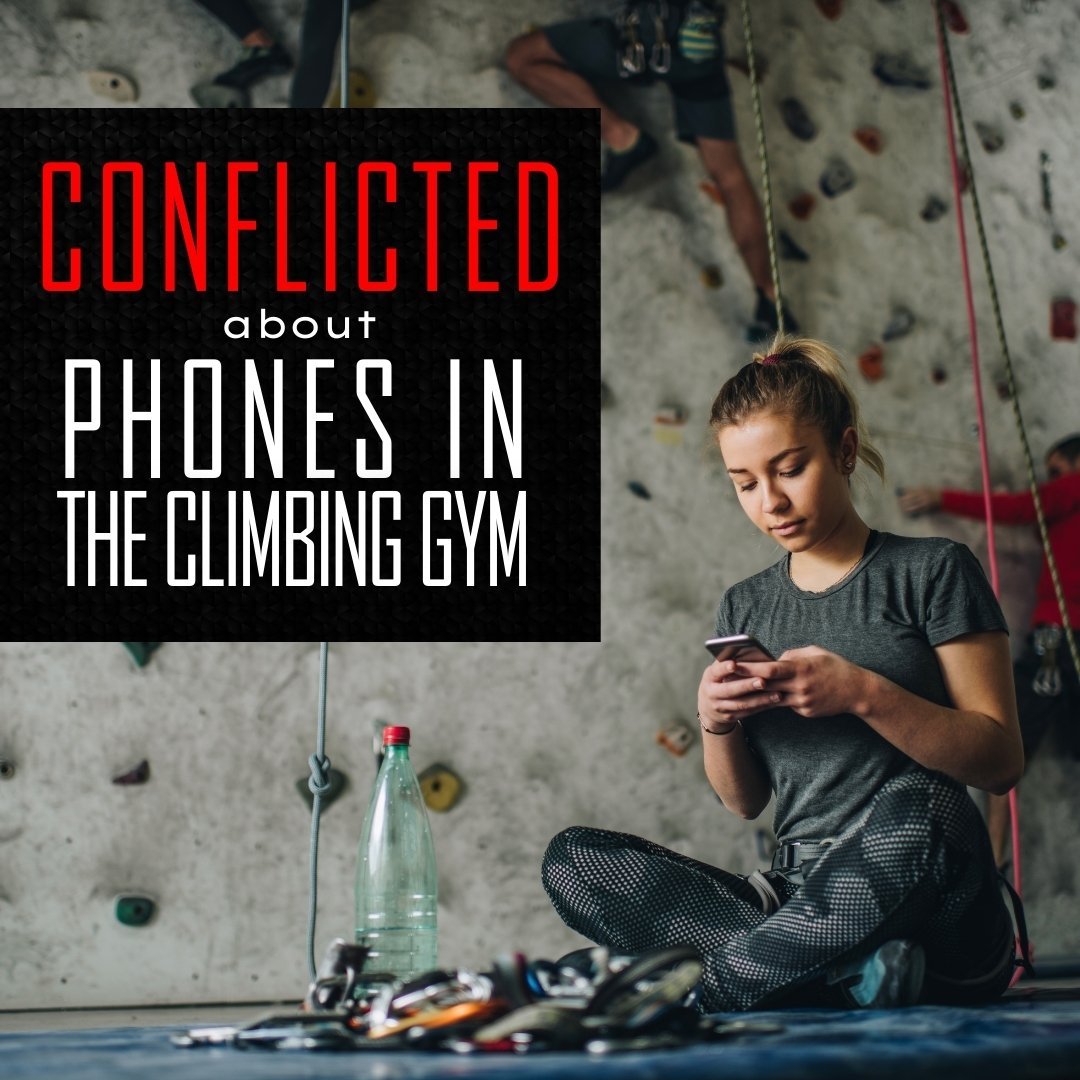
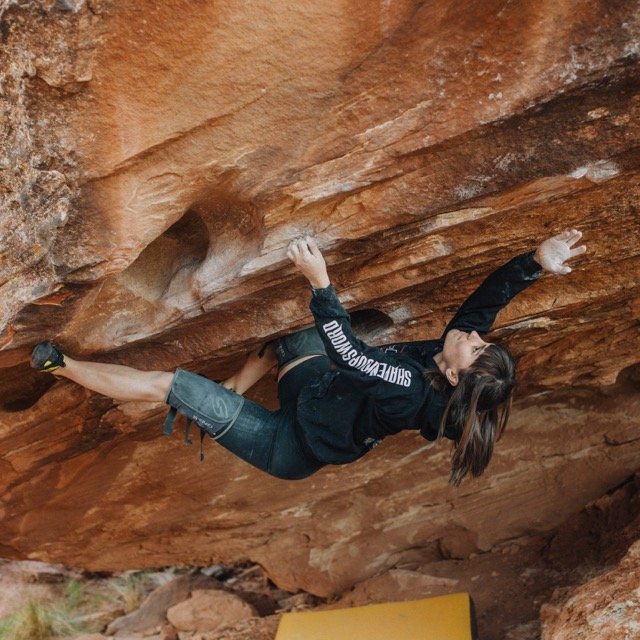

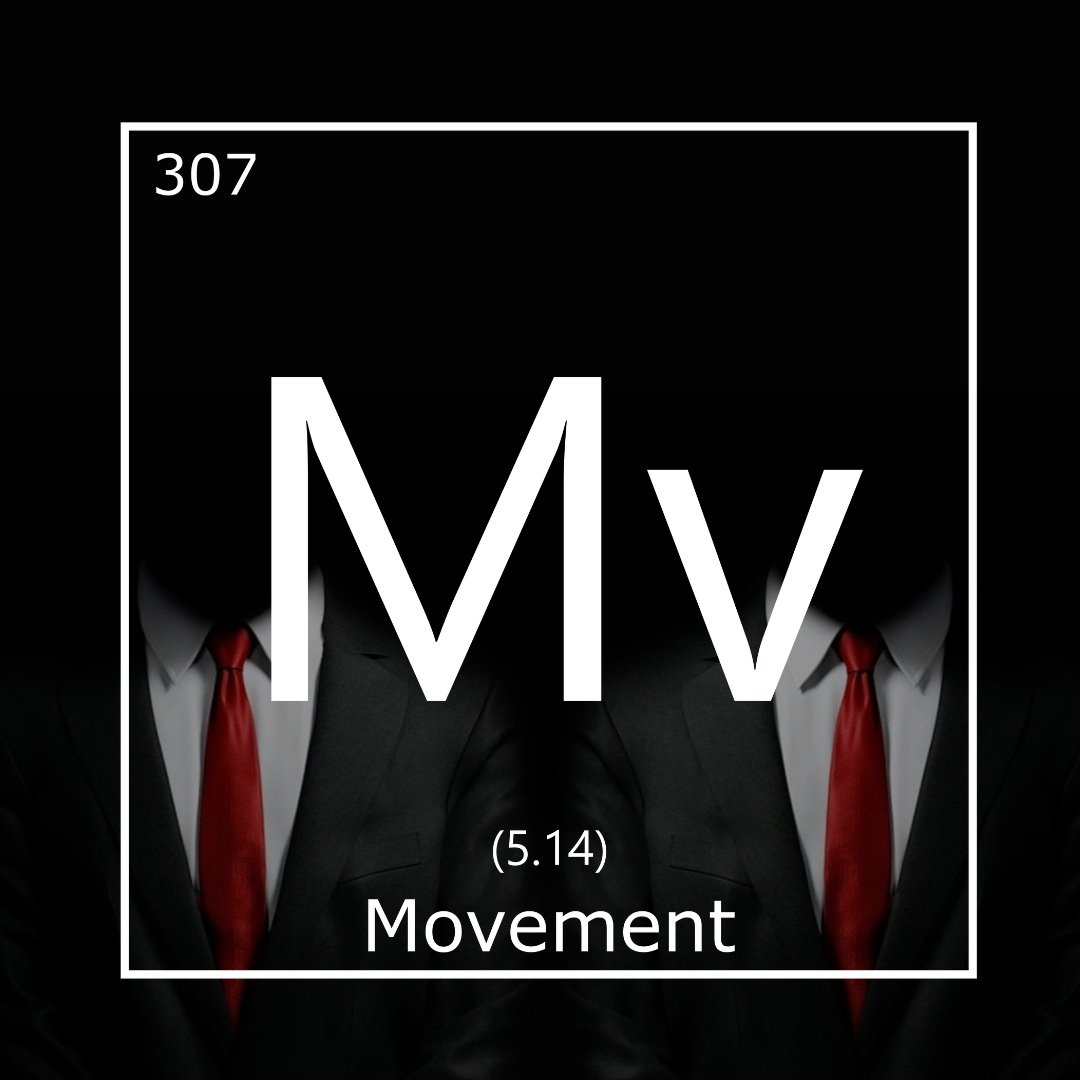
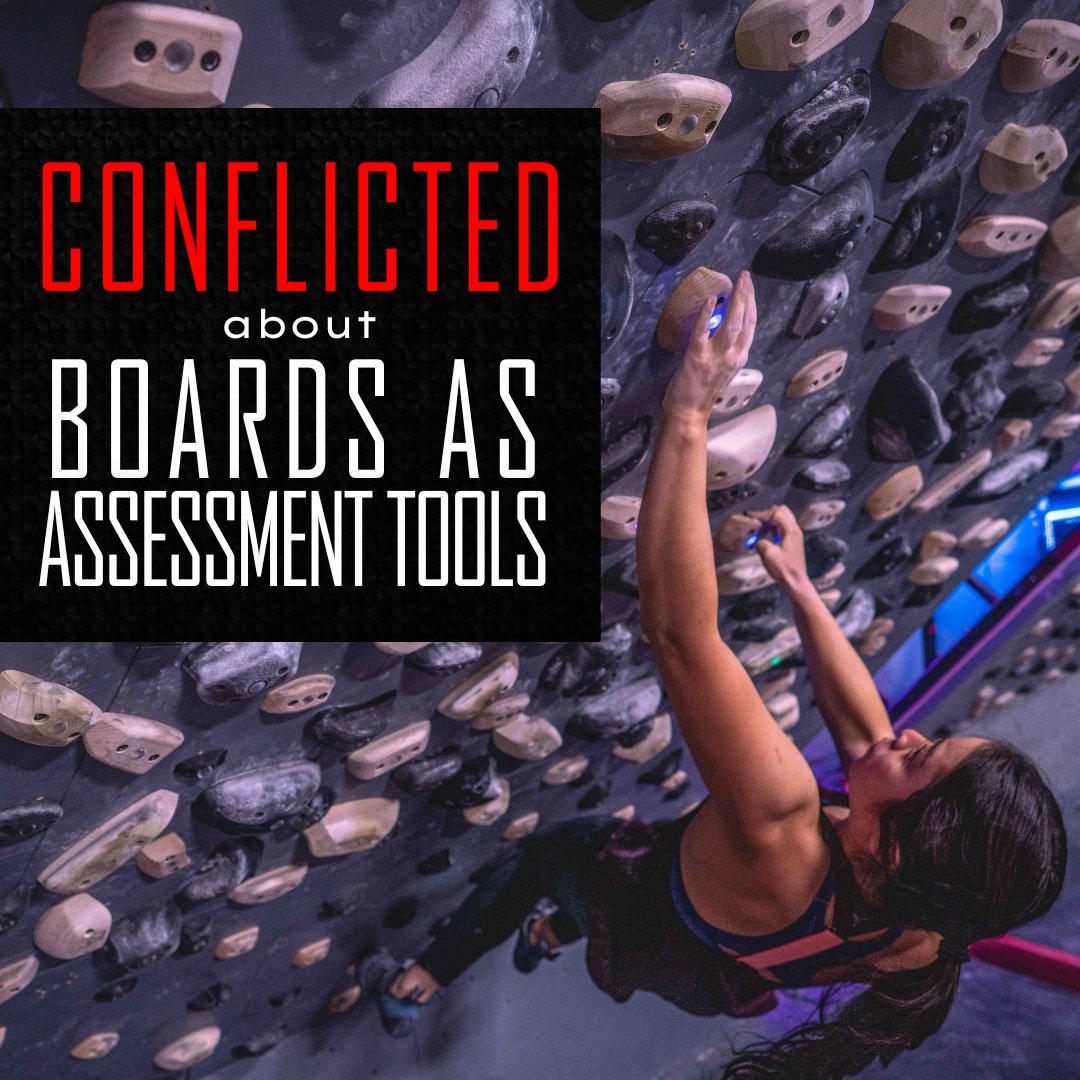
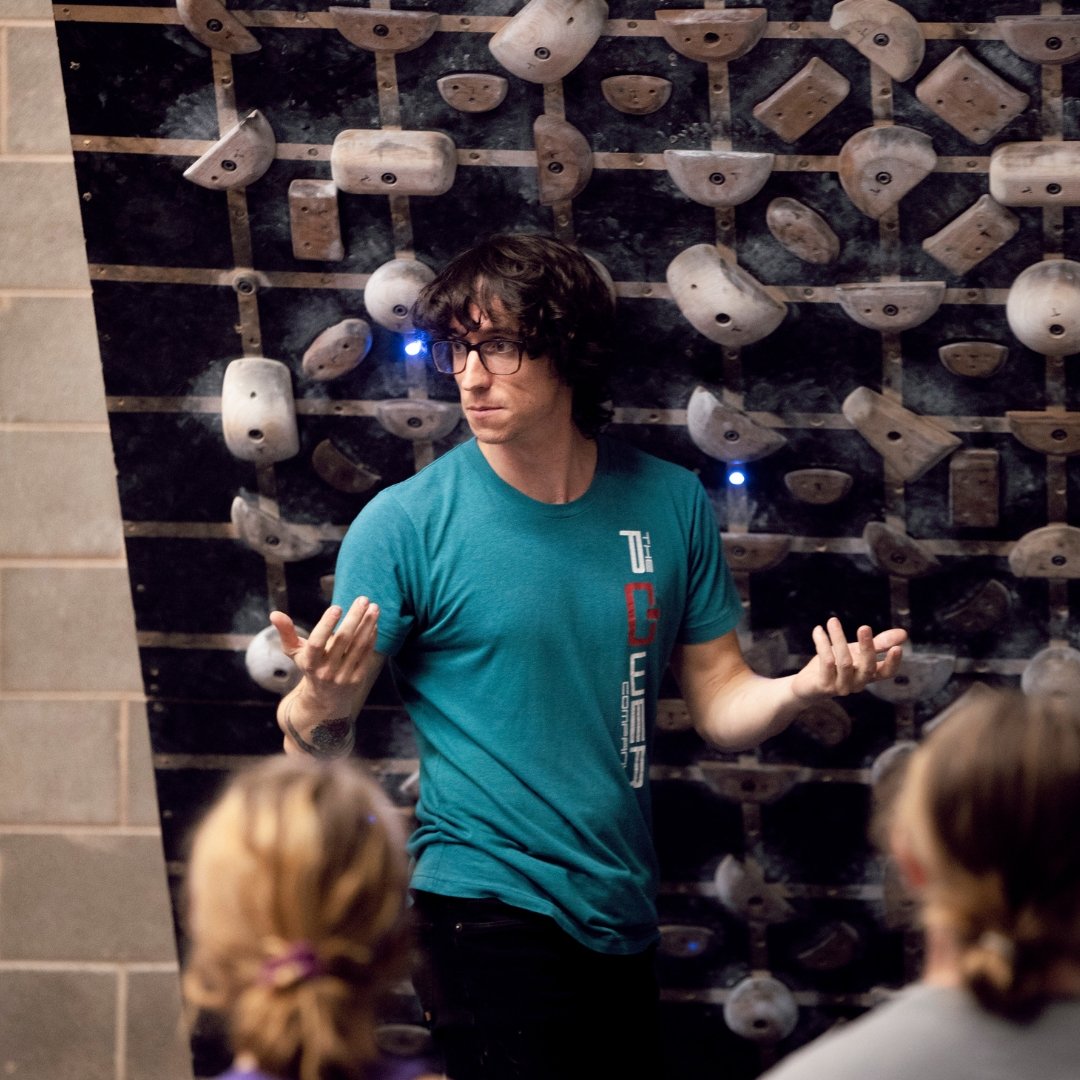
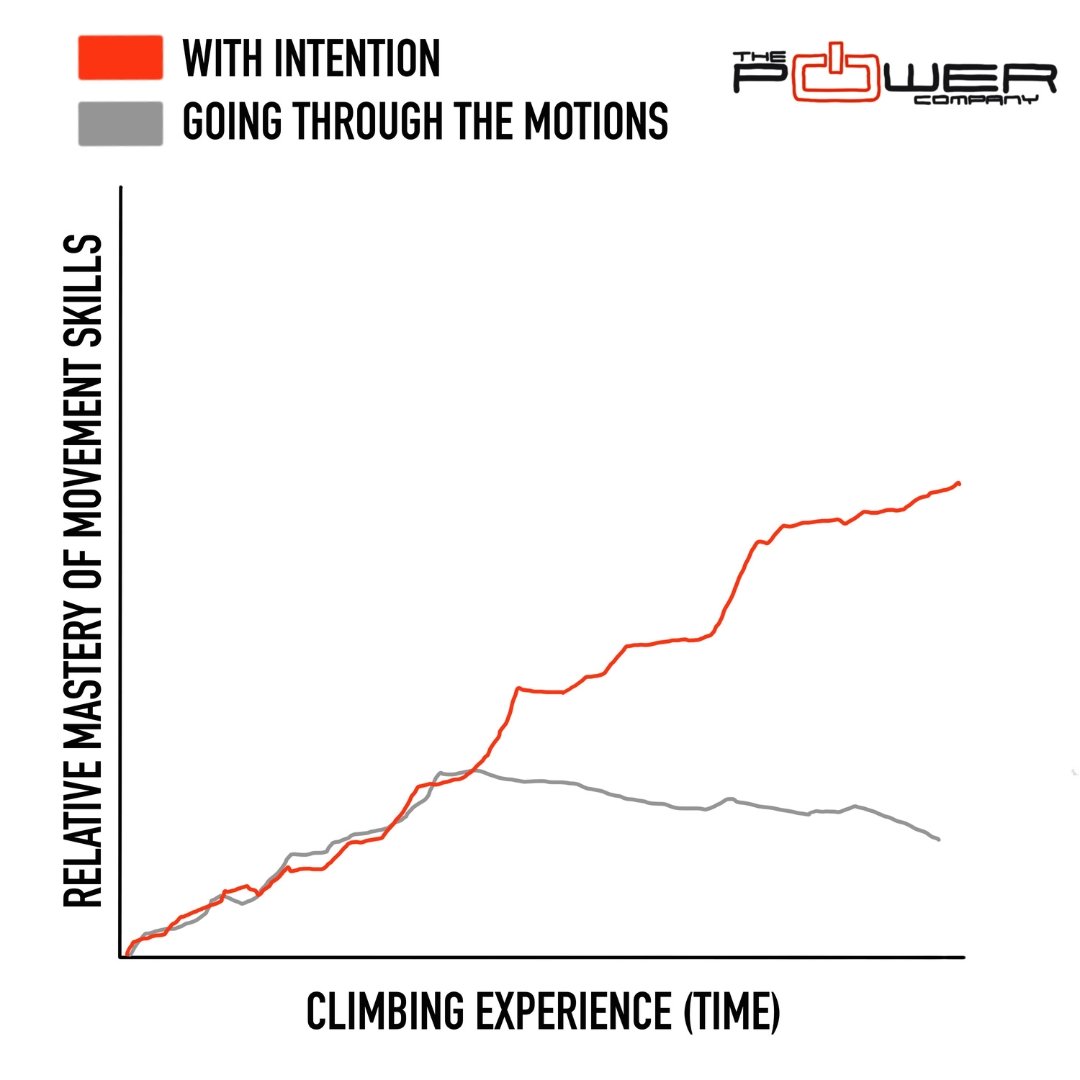







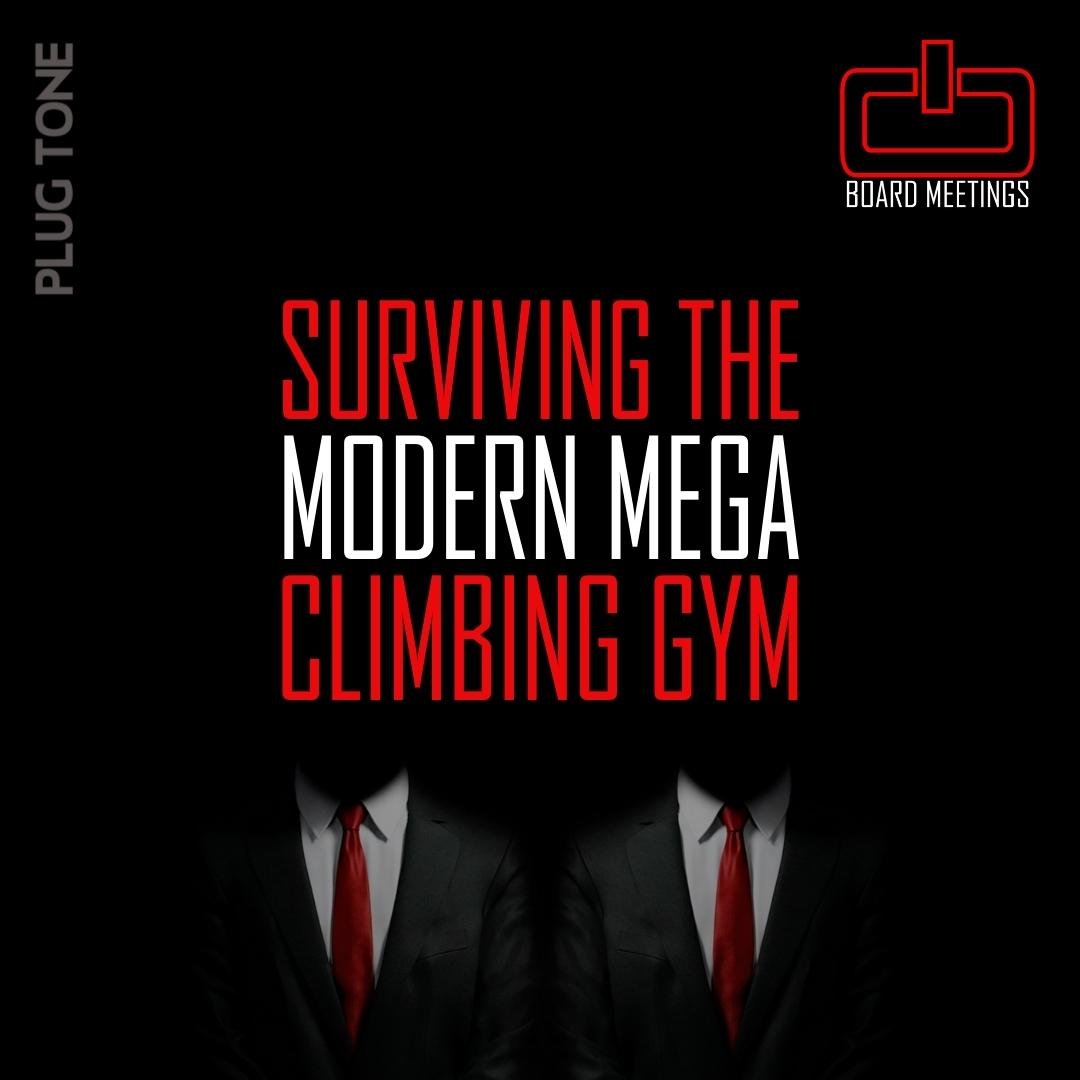


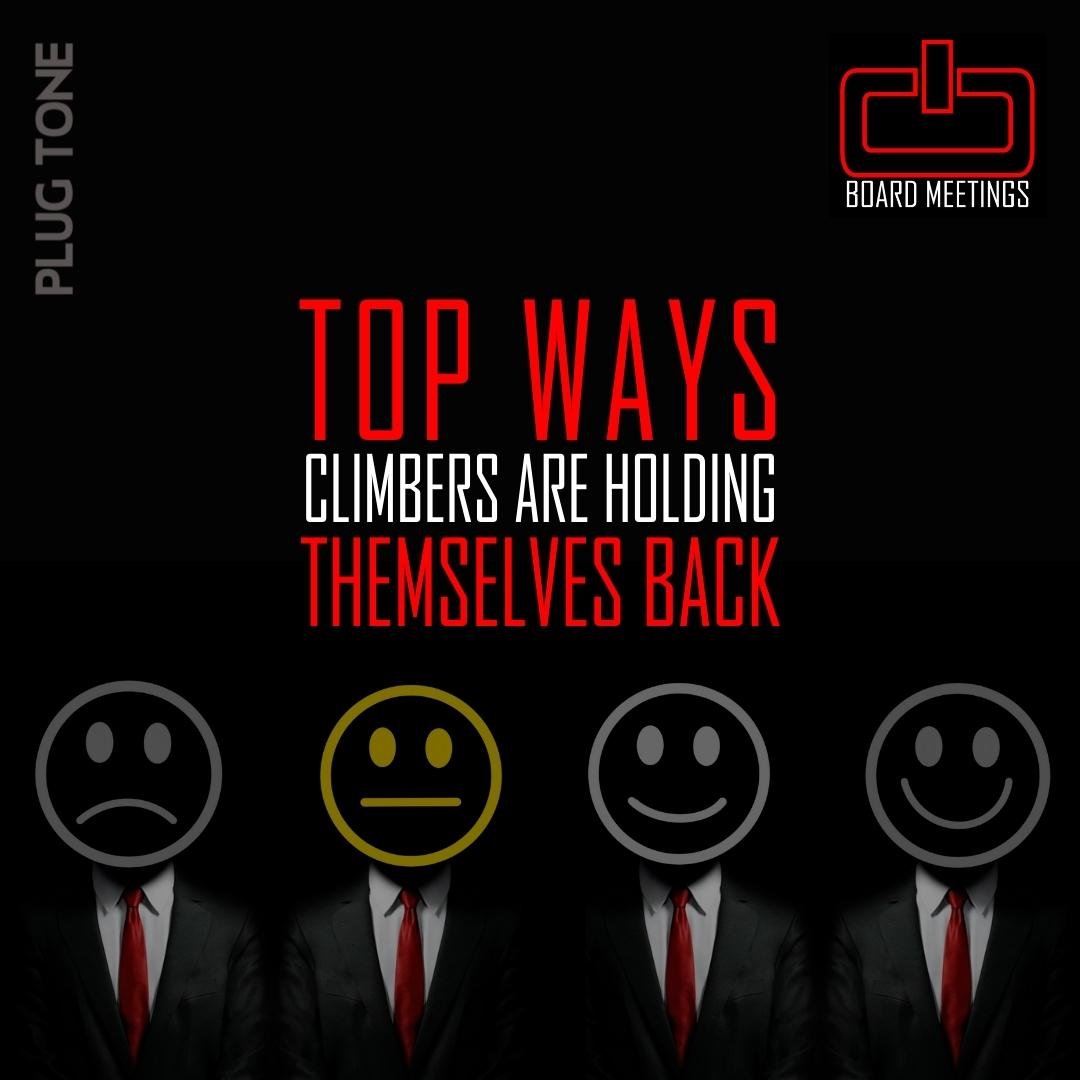



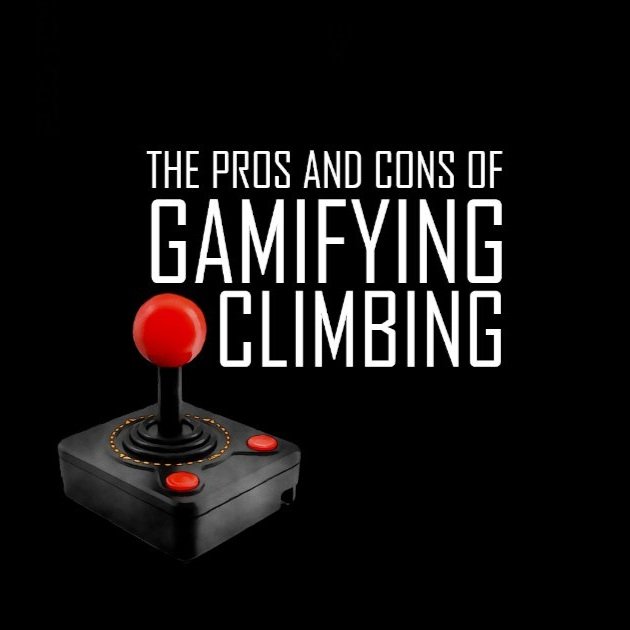

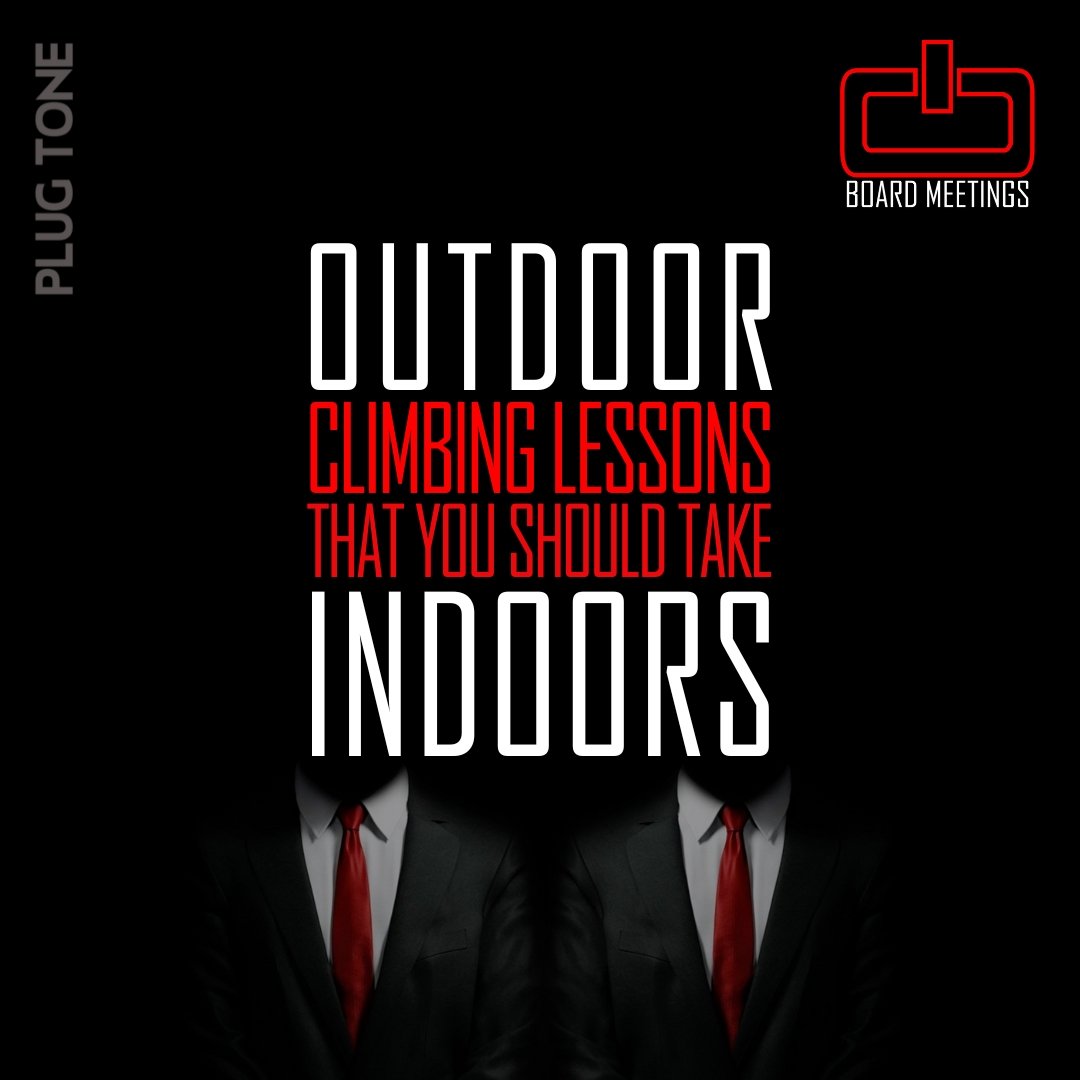

How do you know which is right for your situation?